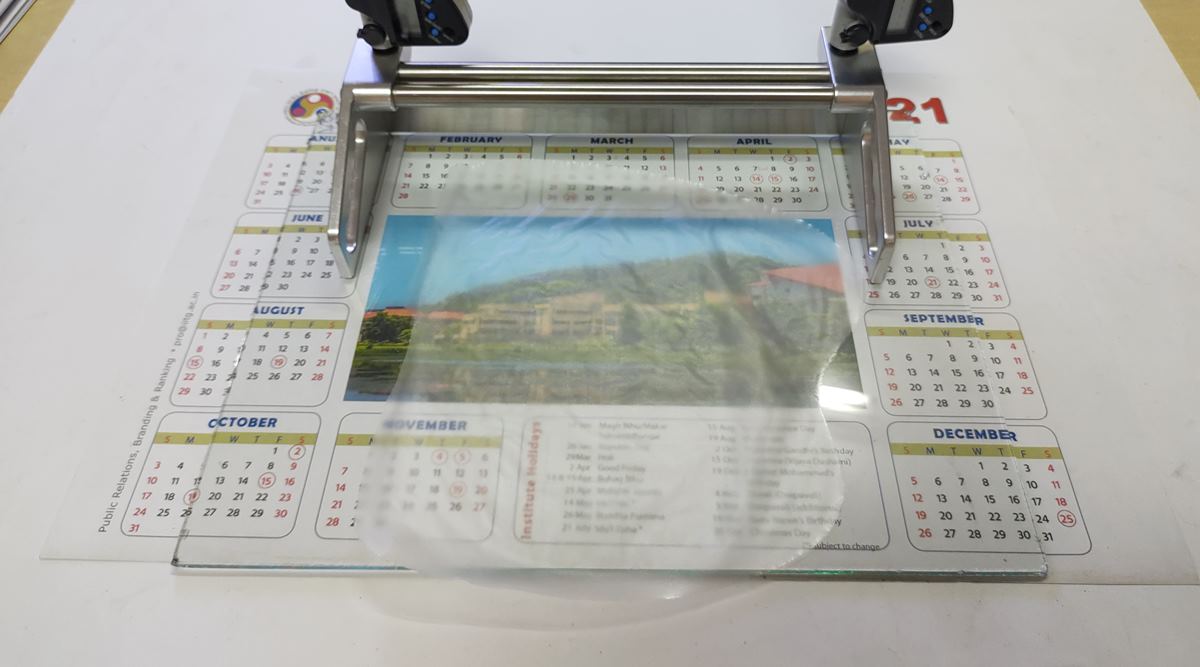 In addition to their biodegradability that counters environmental hazards, the mentioned films are easy for people to afford. (IIT Guwahati)
In addition to their biodegradability that counters environmental hazards, the mentioned films are easy for people to afford. (IIT Guwahati) Researchers at the Indian Institute of Technology (IIT), Guwahati have invented a biodegradable and low-cost composite transparent wound dressing film. According to the team, the material, based on integration of a synthetic polymer, is non-toxic in nature and will create a moist environment that would enable the body to heal on its own through endogenous enzymes.
The laboratory-scale development was found to be at least 50 per cent economical in comparison with similar commercial materials. The findings have been published in International Journal of Biological Macromolecules.
“Cotton wool, lint, and gauzes are commonly used wound-dressing materials. They are often deployed to manage the wound exudates and accelerate the healing process. However, a major disadvantage of such materials is with respect to the painful removal exercises that can even damage a healed tissue. Further, their opaqueness becomes a critical issue for sensitive wound applications that demand periodic visualisation-based analysis and treatment procedures,” said Aritra Das, a PhD scholar at IIT Guwahati.
“This invention has the potential to make a huge impact on the field. It emphasizes upon the integration of a synthetic polymer namely polyvinyl alcohol (PVA) with a natural polymer starch (St) to eventually achieve a low-cost, biodegradable, non-toxic and transparent composite hydrogel,” Das added.
The team has created the knowledge framework and associated protocols for successful identification and optimisation of polymer hydrogel films for probable wound dressing applications.
“The product has the potential to prevent bacterial invention even after it gets swelled under a hydrolytic environment and loses its occlusivity. The steady weight loss characteristics presented by the polymer network provides essential release of the components, especially citric acid which secure the protection barrier. Apart from providing an adequate environment towards the growth of the wounded cells, the leached components from the composite as well assist towards the accelerated growth of the healthy cells and tissues,” said Chandan Das, professor at the Department of Chemical Engineering, IIT Guwahati.
According to the team, the laboratory-achieved film constitution can be further targeted towards in-vivo characterisations and needful scale-up investigations. The enhancement of PVA-St composite hydrogel film characteristics with malic acid, replacing citric acid affirmed even more promising results in terms of both property enhancement as a viable wound dressing film and reduction in the retail cost of the film fabrication.
“The research has been carried out in an experimental and tabletop environment that needs furthering studies towards scale-up as well as in-vivo analysis (real world applications). Among these, the scale-up-related studies can be addressed after targeting the in-vivo analysis using specimens such as wounded rats. Considering processing costs and probable insights from scale-up studies, the anticipated price of the developed materials is expected to be about 50 per cent or lesser of the commercial price of the mentioned materials,” said Ramagopal VS Uppaluri, Department of Chemical Engineering, IIT Guwahati.
- The Indian Express website has been rated GREEN for its credibility and trustworthiness by Newsguard, a global service that rates news sources for their journalistic standards.

